Mogelijkheid van associatie door serie merken
Het enkele feit dat de waren en/of diensten van de beide merken kunnen overlappen, namelijk op het gebied van mode, betekent niet dat dit zorgt voor associatie van de merken. Het gerecht gaat ervan uit dat het publiek en professionals zich bewust zijn van de beperkte sector waarin de merken 'COSMO' en 'COSMOPOLITAN' bekend zijn, omdat de tijdschriften die deze merken hanteren een wijde circulatie hebben. Het element 'COSMO' kan niet worden gezien als een onafhankelijk element. Het publiek zal het merk 'COSMOPOLITAN' in zijn geheel onthouden, vanwege zijn betekenis. Derhalve bestaat er volgens het gerecht geen associatiegevaar, ondanks het overeenstemmende elemenet 'COSMO' in de serie van merken.
Verwarringsgevaar
Het gerecht oordeelt dat de Kamer van Beroep juist heeft vastgesteld dat de tekens verschillend zijn en dat er geen verwarringsgevaar te duchten is. Het merk COSMOBELLEZA kan derhalve gehanteerd worden in Spanje.
Gerecht EU: wijst de klacht af.
Relevante publiek
35 Finally, as regards the applicant’s claim that it marketed some of its goods in a particular way, and its claim, in relation to the characteristic content of its magazines or other publications that its intention was clearly to win over the female public, it must be declared that those claims are of no relevance, since, in accordance with settled case-law, a marketing concept is purely a matter of choice for the undertaking concerned and may change after a sign has been registered as a Community trade mark, and therefore cannot have any effect on the assessment of the likelihood of confusion in opposition proceedings (see, to that effect, judgment of 23 September 2009 in Case T‑99/06 Phildar v OHIM – Comercial Jacinto Parera (FILDOR), not published in the ECR, paragraph 95). In the light of the foregoing, the applicant’s argument that the relevant public is solely a female public or, more particularly, a public consisting of women broadly interested in beauty must be rejected as unfounded.
39 In that regard, it must first be observed that, as is clear particularly from paragraph 28 of the contested decision, read together with paragraph 21, the Board of Appeal ruled out any likelihood of confusion between the marks at issue because of the absence of similarity between the marks and because, consequently, one of the indispensable conditions for the application of Article 8(1)(b) of Regulation No 207/2009 was not satisfied. It follows that that exclusion of any likelihood of confusion was made without regard to whether the goods and services at issue were similar or even identical.
Vergelijking waren/diensten
40 In those circumstances, even if the view is taken that the applicant intends, by its claims, to maintain that a finding of identity or ‘enhanced’ similarity should have been made in relation to a broader range of services or goods at issue than was the case (see paragraph 34 above), it is clear that those claims are ineffective, since the analysis of the lawfulness of the contested decision must relate solely to the assessment of the similarity of the signs, and the consequence of confirmation that they are overall dissimilar will be the dismissal of this action (see, to that effect, GIORGIO BEVERLY HILLS, paragraph 22 above, paragraph 52).
Vergelijking van de tekens
43 Assessment of the similarity between two marks means more than taking just one component of a composite trade mark and comparing it with another mark. On the contrary, such a comparison must be made by examining each of the marks in question as a whole, which does not mean that the overall impression conveyed to the relevant public by a complex trade mark may not, in certain circumstances, be dominated by one or more of its components. It is only if all the other components of the mark are negligible that the assessment of the similarity can be carried out solely on the basis of the dominant element. That could be the case, in particular, where that component is capable alone of dominating the image of that mark which members of the relevant public keep in their minds, so that all the other components of the mark are negligible in the overall impression created by it (see Case T‑7/04 Shaker v OHIM – Limiñana y Botella (Limoncello della Costiera Amalfitana shaker) [2008] ECR II‑3085, paragraph 40 and case-law cited).
COSMOPOLITAN
61 Further, the Court must observe, as OHIM did, that consumers understanding the abovementioned meanings or suggestions will have no reason to divide the marks at issue into a number of separate words. In respect of the earlier mark, they will grasp its overall aspect, the more so because the suffix ‘politan’ does not exist as an independent linguistic unit. As regards the mark applied for, that will probably also be the case, because the verbal element ‘cosmo’ will be regarded by that part of the public which detects the conceptual reference of the mark applied for as being a qualification of the word ‘belleza’, which gives a suggested meaning to the whole of the neologism in question, describing a sort of cosmic beauty. Further, the part of the relevant public who do not understand that meaning will take the mark to be a verbal expression which is homogeneous and invented.
62 In light of the abovementioned findings, it must be concluded that the Board of Appeal was correct to hold that the signs in question were dissimilar overall. That conclusion cannot be invalidated by the applicant’s claims relating to, first, the manner in which the common part ‘cosmo’ in the mark applied for is emphasised when it is used by the intervener and, secondly, the consideration that the earlier mark enjoys an enhanced distinctiveness because of its reputation and extensive use.
66 In those circumstances, neither the fact that the earlier mark has a reputation nor the fact that it is well known can be taken into consideration when assessing the similarity of the marks at issue. In any event, those circumstances cannot constitute in the present case a factor of sufficient weight to invalidate the conclusion that there is no similarity between it and the mark applied for in any of the countries in the European Union under consideration, since that conclusion derives from an objective analysis of the marks taken as a whole.
COSMOPOLITAN TELEVISION en COSMOPOLITAN SHOW
70 It is clear that, since it has already been concluded that the marks COSMOBELLEZA and COSMOPOLITAN are dissimilar (see paragraph 62 et seq. above), only if the additional elements of the earlier marks COSMOPOLITAN TELEVISION and THE COSMOPOLITAN SHOW strengthened the similarities in relation to the sign applied for would it have been possible to come to a different conclusion. It is however clear that, on the contrary, the addition of the words ‘television’ and ‘show’ alters both the structure of the earlier marks as compared with the mark applied for and their conceptual scope, by adding a reference to the sectors covered by the earlier marks. Accordingly, in terms of the overall comparison, visually, phonetically and conceptually, the distance between the marks at issue has merely increased, as correctly found by the Board of Appeal when it refers to the element ‘television’ and, implicitly, the element ‘show’.
71 Further, the applicant’s various claims to the effect that those additional elements refer directly to services covered by the mark applied for are of no relevance, since that fact, even were it to be considered as proved, has no effect on the comparison of the signs at issue. That is because such claims fail to demonstrate that conceptually the marks COSMOPOLITAN TELEVISION or THE COSMOPOLITAN SHOW, on the one hand, and COSMOBELLEZA, on the other, are significantly closer, since the conceptual analysis must take into account, more specifically, the marks as such and not solely the sectors in which it is presumed they will be used. In any event, if there is any coming together of the concept to be found in the earlier marks and some of the services which the mark applied is intended to protect, that cannot outweigh the differences in the structure of marks under comparison.
COSMO
76 Conceptually, the Court shares the view of the Board of Appeal that there is some difference. Admittedly, in Portugal, where the relevant consumers will perceive the meanings or suggestions carried by the two marks at issue, namely, the reference to a ‘cosmic beauty’, on the one hand, and ‘cosmos’, ‘space’ or ‘the universe’, on the other, the concepts overlap to an extent, both marks including the reference to the ‘cosmic’. However, the conceptual addition in the mark applied for designed to refer to beauty enhances and makes specific the meaning of that mark, in such a way as to differentiate it from the earlier mark COSMO, conveying those concepts linked to ‘the universe’. Further, taking into account such a differentiating feature ensures that undue protection is not given to marks relying on a word which could be understood as part of everyday language, the inherent distinctiveness of which cannot accordingly be regarded as particularly high (see, by analogy, Case T‑34/04 Plus v OHIM – Bälz and Hiller (Turkish Power) [2005] ECR II‑2401, paragraphs 61 to 63).
77 As regards the United Kingdom public, it is clear that since that public will not understand the meaning of the mark COSMOBELLEZA, but solely that of the mark COSMO, it will continue to perceive a degree of conceptual dissimilarity, albeit slight, because of the Italian, Portuguese or Spanish aspect suggested by the mark applied for, but will not however understand the specific meaning.
78 That conclusion is again not invalidated by the applicant’s reference to the fact that the earlier mark has a reputation and that its use is long and extensive. As has already been stated in paragraphs 64 and 65 above, the reputation or use of the earlier mark COSMO have not been demonstrated in relation to the services which are at issue in this case and cannot therefore be taken into consideration in the assessment of the similarity of the marks at issue. In any event, neither the enhanced distinctiveness as a result of use nor even the reputation of the earlier mark can invalidate the conclusion arrived at following an objective analysis of the absence of similarity between the marks, taken overall, in any of the countries of the European Union under consideration.
COSMO TEST
82 In that regard, suffice it to state that since an overall similarity between the mark applied for and the earlier mark COSMO has been ruled out, there can be no other conclusion in relation to the earlier mark COSMO TEST, in the absence of evidence of any conceptual link between the additional element ‘test’ in the earlier mark and the mark applied for which might be capable of increasing the similarities between the marks at issue. However, the applicant has not claimed that the meaning of the mark COSMO TEST, if it is to be understood by part of the relevant public as referring to a sort of universal test, brings that mark closer, conceptually, to the meaning of the mark applied for, namely ‘cosmic beauty’. The applicant’s argument must therefore be rejected.
Associatiegevaar
90 In that regard, while it is admittedly true that some of the services covered by the trade mark applied for and the abovementioned goods protected by the earlier rights may overlap as regards the field in which they are placed, namely, that of fashion, that factor alone cannot be regarded as sufficient ground for the conclusion that the relevant consumers using the intervener’s services would usually perceive the marks COSMO or COSMOPOLITAN, which have a reputation in the United Kingdom, as referring to a supplier of similar services, and, thereafter, would tend to associate the applicant’s undertaking with that of the intervener. That is because whether it is, as the case may be, professionals or the general public who are involved, it is reasonable to believe that those consumers will be aware of the very restricted sector in which the use of the marks COSMO and COSMOPOLITAN is well known, since their reputation derives particularly, not to say exclusively, from the fact that the magazines which they designate have a wide circulation, as is clear from the facts taken into consideration by the Opposition Division and summarised in the contested decision.
91 In any event, in the circumstances of the present case, the element ‘cosmo’ cannot be regarded as the common element which is characteristic of a series consisting of the marks COSMO, COSMOPOLITAN and COSMOBELLEZA, for the purposes of the case-law cited in paragraph 87 above. That is because it is clear that neither in the earlier mark COSMOPOLITAN nor in the mark applied for is it probable that the element ‘COSMO’ will be perceived as being an independent element which serves to connect those marks to a series. In the case of the former, it is the English word ‘cosmopolitan’, used in everyday vocabulary, which will be remembered as a whole by consumers, because of its more specific semantic content, distinct from that of the element ‘cosmo’ taken by itself. In the case of the latter, while being fanciful, the mark applied for will also be perceived as it is, that is say, as a homogeneous unit, given that consumers in the United Kingdom have no reason to distinguish its second element, which they will not understand.
Verwarringsgevaar
102 In addition, as previously stated in paragraphs 25 to 27 above, in relation to the applicant’s claim that the abovementioned earlier marks were used and had a reputation ‘in all EU Member States’, the applicant has not submitted in support of its claim evidence which is sufficient to render invalid the findings of the Opposition Division, adopted by the Board of Appeal, that solely in the territories of the United Kingdom and France, and solely in respect of some of the goods in Class 16, was it demonstrated that some of the earlier marks had a reputation or were well known (see, inter alia, paragraphs 13, 64 and 65 above). Neither the website screenshots submitted as part of the annex to the application nor the general references to the administrative file before OHIM make it possible to assess, for the purposes of the case-law cited in paragraphs 95 and 96, the market position held by the marks at issue in the markets of other countries of the European Union, how intensive and long-standing their use has been or even the proportion of interested parties who identify the goods or services as having their origin in a specific undertaking on the basis of those trade marks.
103 Finally, as regards the applicant’s arguments that the relevant public for the marks at issue is identical, and, more specifically, that it is limited to women interested in fashion and beauty, who would more readily think of the earlier marks when they were offered the services covered by the mark applied for, those claims have already been refuted in paragraph 33 et seq. above.
104 In the light of all of the foregoing, it must be held that the Board of Appeal correctly determined that the signs at issue were dissimilar and that there was no likelihood of confusion between them. In those circumstances, the Court considers that there is no need to rule on the claims submitted by the intervener in relation to, first, the peaceful coexistence of the marks at issue in Spain and, second, the references to decisions of Spanish courts holding that there was no likelihood of confusion between the marks COSMOPOLITAN and COSMOBELLEZA.
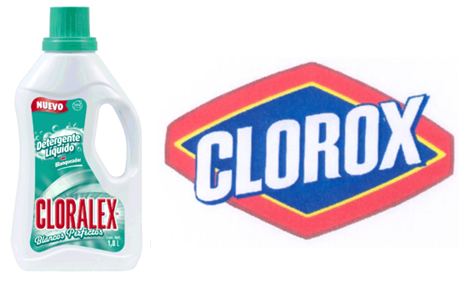 Gemeenschapsmerkenrecht. In de oppositieprocedure komt aanvrager van het merk CLORALEX (klasse 3,5) de houdster van diverse nationale woordmerken CLOROX (voornamelijk klasse 1,3 en 5) tegen. De oppositieafdeling wijst de oppositie toe. In beroep wordt deze beslissing vernietigd en wordt de gehele oppositie afgewezen. Aangevoerde middel bij het Gerecht EU: Beroepskamer heeft onjuist geoordeeld over de overeenstemming van de merken, er is geen rekening gehouden met de duidelijke gelijkenissen tussen het begin en eind van het ene en het begin en einde van het andere merk.
Gemeenschapsmerkenrecht. In de oppositieprocedure komt aanvrager van het merk CLORALEX (klasse 3,5) de houdster van diverse nationale woordmerken CLOROX (voornamelijk klasse 1,3 en 5) tegen. De oppositieafdeling wijst de oppositie toe. In beroep wordt deze beslissing vernietigd en wordt de gehele oppositie afgewezen. Aangevoerde middel bij het Gerecht EU: Beroepskamer heeft onjuist geoordeeld over de overeenstemming van de merken, er is geen rekening gehouden met de duidelijke gelijkenissen tussen het begin en eind van het ene en het begin en einde van het andere merk.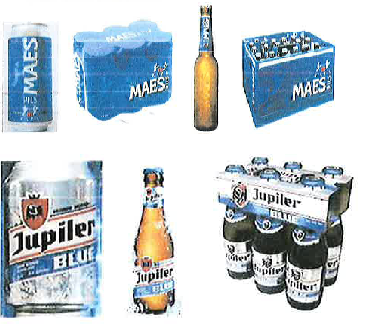 Uitspraak ingezonden door Jeroen Muyldermans,
Uitspraak ingezonden door Jeroen Muyldermans,  Gemeenschapsmerkenrecht. Ongerechtvaardigd voordeel trekken uit reputatie ouder merk.
Gemeenschapsmerkenrecht. Ongerechtvaardigd voordeel trekken uit reputatie ouder merk. Gemeenschapsmerkenrecht.
Gemeenschapsmerkenrecht.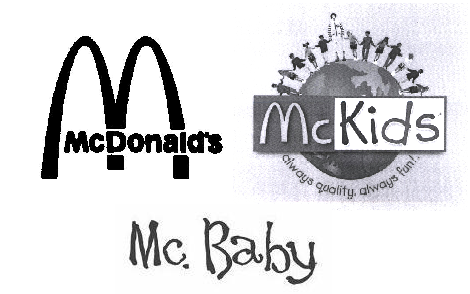 Gemeenschapsmerkenrecht. Verwarringsgevaar.
Gemeenschapsmerkenrecht. Verwarringsgevaar.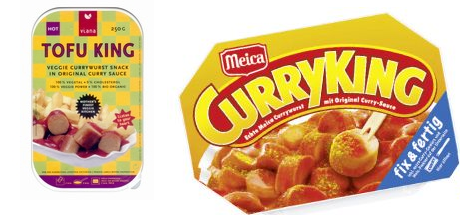 In navolging van de beslissing van het Gerecht EU (
In navolging van de beslissing van het Gerecht EU ( Gemeenschapsmerkenrecht. In de vernietigingsprocedure vordert Constellation Brands Inc. vernietiging van de beslissing van de eerste kamer van beroep van het OHIM, waarin gemeenschapsmerkinschrijving van het woordmerk 'COOK'S' nietig wordt bevonden. De afdeling wijst het verzoek tot herstel in de vorige toestand af en bevestigt de nietigverklaring van de gemeenschapsmerkinschrijving, het beroep wordt verworpen. Middel: feiten onjuist beoordeeld; niet noodzakelijke zorgvuldigheid betracht.
Gemeenschapsmerkenrecht. In de vernietigingsprocedure vordert Constellation Brands Inc. vernietiging van de beslissing van de eerste kamer van beroep van het OHIM, waarin gemeenschapsmerkinschrijving van het woordmerk 'COOK'S' nietig wordt bevonden. De afdeling wijst het verzoek tot herstel in de vorige toestand af en bevestigt de nietigverklaring van de gemeenschapsmerkinschrijving, het beroep wordt verworpen. Middel: feiten onjuist beoordeeld; niet noodzakelijke zorgvuldigheid betracht.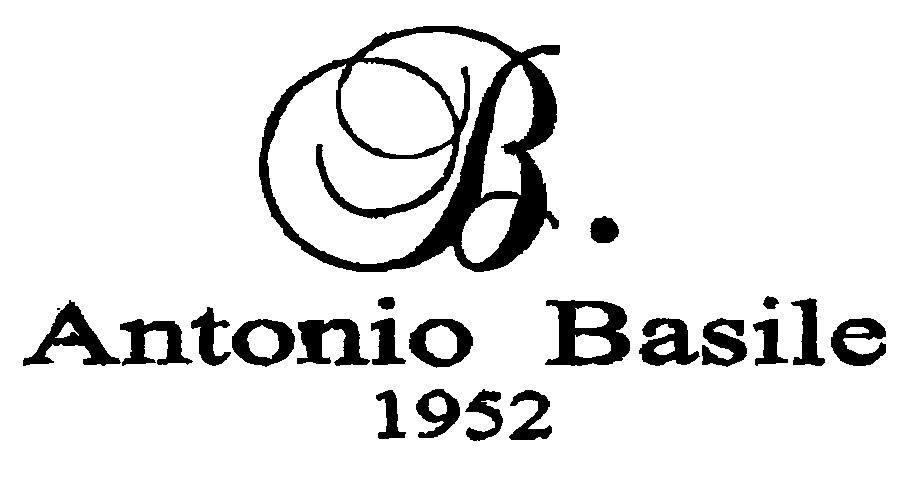 Gemeenschapsmerkenrecht.
Gemeenschapsmerkenrecht.

 Gemeenschapsmerkrecht. Associatiegevaar.
Gemeenschapsmerkrecht. Associatiegevaar.


























